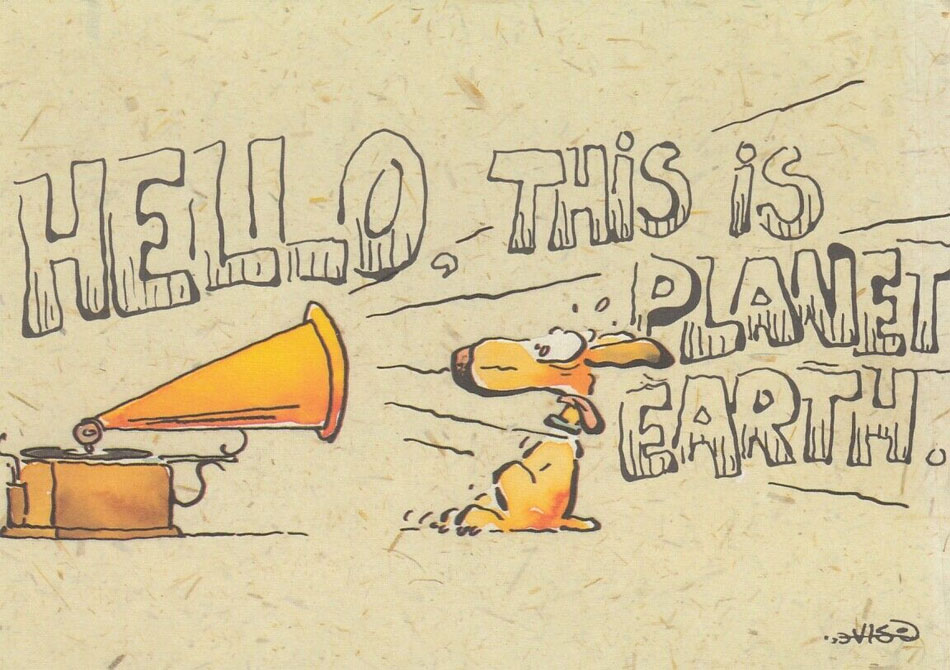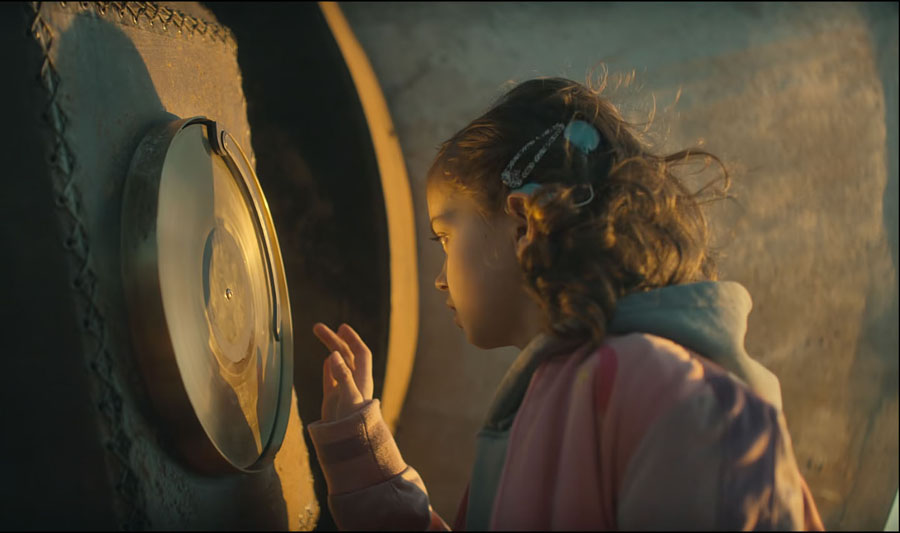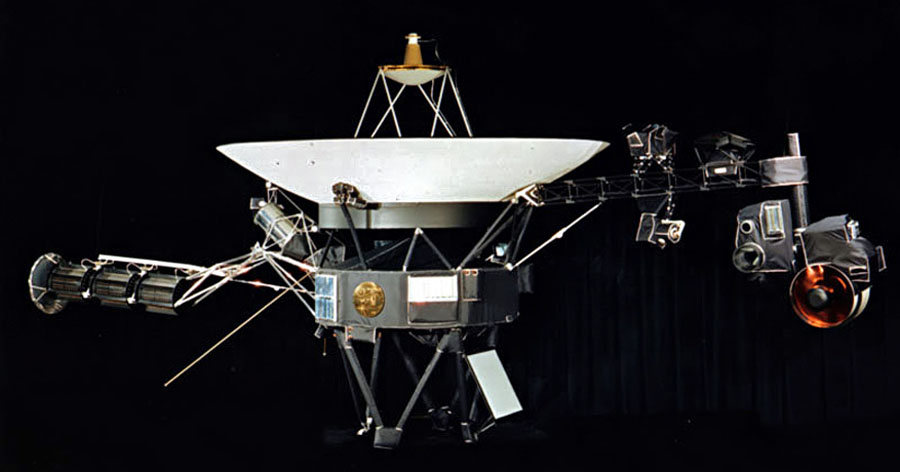Voyager 1's Pale
Blue Dot Earth as a small blue dot in a fuzzy beam of light.
Source: NASA/JPL-Caltech
- Published: February 5, 2019
Historical Date:
February 14, 1990
The Pale Blue Dot is
a photograph of Earth taken Feb. 14, 1990, by NASA’s Voyager 1 at
a distance of 3.7 billion miles (6 billion kilometers) from the
Sun. The image inspired the title of scientist Carl Sagan's book,
"Pale Blue Dot: A Vision of the Human Future in Space," in which
he wrote: "Look again at that dot. That's here. That's home. That's
us."
See
NASA's Voyager 1's Pale Blue Dot for more information about
the 30th anniversary's new version of one of the most iconic images
taken by NASA's Voyager mission known as "the Pale Blue Dot.
For the definitive written
story of the Voyager Interstellar Record, a.k.a. the Golden Record,
why it was created, how the contents were selected and specifically
what is on the record, read Murmurs of Earth The Voyager Interstellar
Record by Carl Sagan, F.D. Drake, Ann Druyan, Timothy Ferris,
Jon Lomberg, and Linda Salzman Sagan, Ballantine Books ©1978.
For an on-line story
of The Golden Record, see Voyager NASA Jet Propulsion Laboratory
California Institute of Technology, The
Golden Record.
The Voyager Golden Record
has been released as a 3 translucent gold 140 gram vinyl LPs boxed
set by Ozma
Records. Also included is a full-color 96-page softcover book
containing all images included on the original Voyager Interstellar
Record, gallery of images transmitted back from the Voyager probes,
and a new essay by Timothy Ferris, producer of the original golden
record.

The
list of music on the Golden Record includes "Johnny B. Goode,"
written and performed by Chuck Berry), (Courtesy of Voyager NASA
Jet Propulsion Laboratory California Institute of Technology.)
FACTOLA: On April
22, 1978 NBC's Saturday Night Live did a skit "Next
Week in Review" which reported what would be the biggest
news story of the year, namely that "a foreign planet"
had sent a message to Earth "the FIRST positive proof that
other intelligent beings inhabit the universe." They apparently
had found the Voyager spacecraft, listened to its Golden Record
and had now communicated four words to Earth: “Send More Chuck
Berry”.

Designed by Leendert
Jan Vis ©Paperclip

Dry Bones, 2013 (Courtesy Kirschen)
PhonoMovie Connection
One of the PhonoMovies identified in Phonographia's list of movie connections is a scene from the 2024 Netflix Limited Series "The Signal." Spoiler Alert (or in my family we call these "Spoilsen Alerts" - In the final scene we learn the source of the "Hello" message which the Astronaut Paula had picked up on her receiver while she was in space is coming from the 1977 Voyager which someone has sent back to Earth. The Voyager's phonograph record is playing its message for Planet Earth on the Voyager's on its 16 2/3 speed record player and the record's track is stuck in the groove and is keeps playing "hello." This repetition of "Hello" was mostly likely the needle being stuck at the end of record's track 2 where Carl Sagan's message begins "HELLO from the children of planet Earth."

Removing the cover from the Golden Record, listening to "Hello," touching stylus to move it from its stuck groove, and listening to the rest of the record. ("The Signal," courtesy Netflix, German TV Limited Series, Episode 4, 2024).
Update - October 31,
2024
In an article form IFLSCIENCE
by Dr. Alfredo Carpineti, it was reported that "Voyager 1 Just
Phoned Home From 24 Billion Kilometers Away on A Transmitter not
Used Since 1981."
Voyager 1 continues
to amaze. After 47 years, having crossed together with its twin
into interstellar space, you’d think the spacecraft would stop
surprising us. No chance. The probe had another glitch in the
last few weeks that caused a loss of communication, but it managed
to find a fix all by itself using hardware that had not been used
since 1981.
The team has confirmed
that the S-band transmitter is working well, even after all this
time and at such an incredible distance. They are currently working
to restore the spacecraft to its normal operations.
Everything about
the Voyager probes continues to be a testament to the engineering
team that designed them and those who keep working on them. The
fact that they are still going is truly exceptional. (Ibid.
IFLSCIENCE, September
30, 2024)

Phonographia



